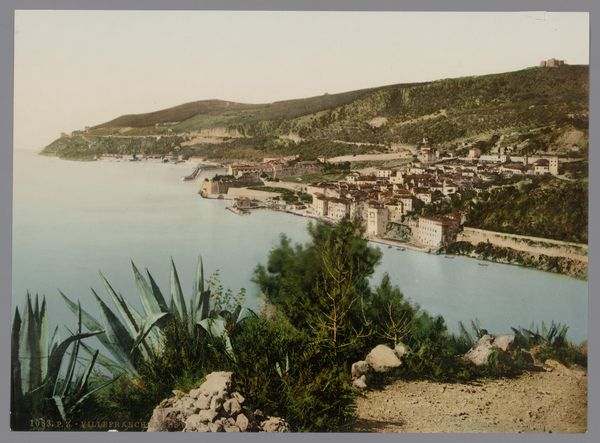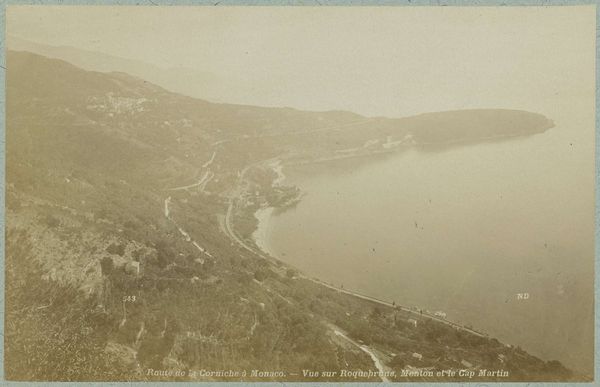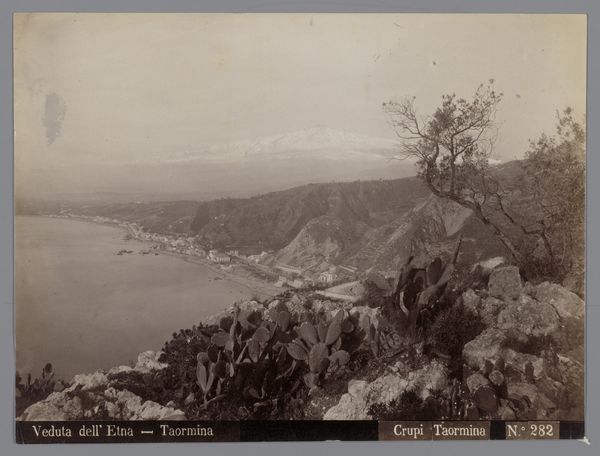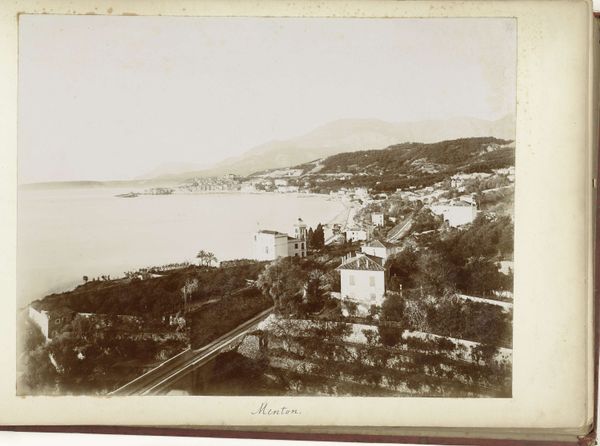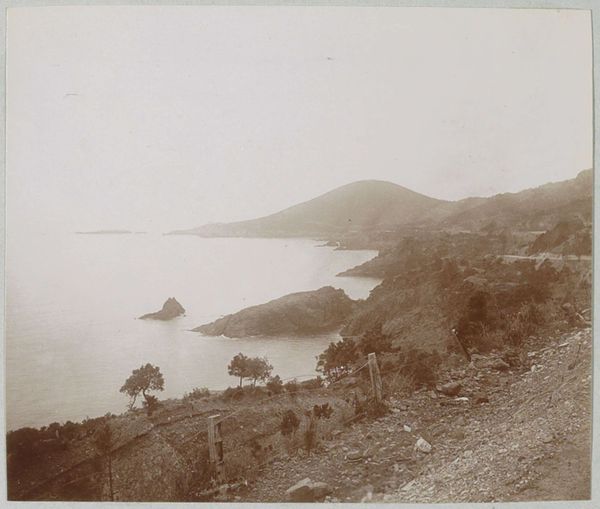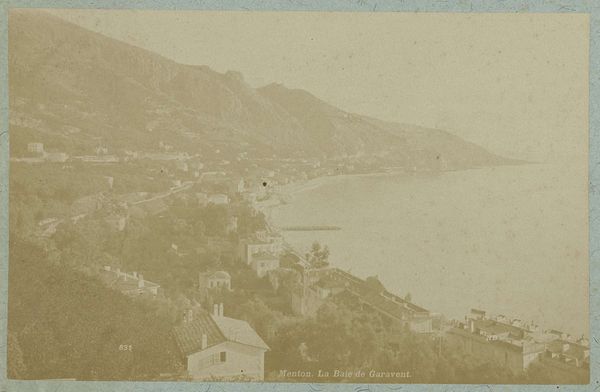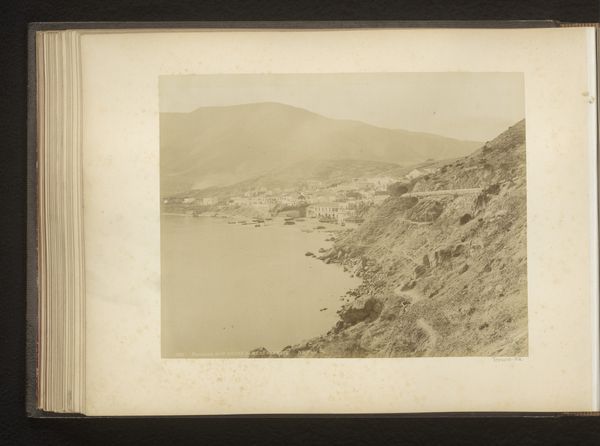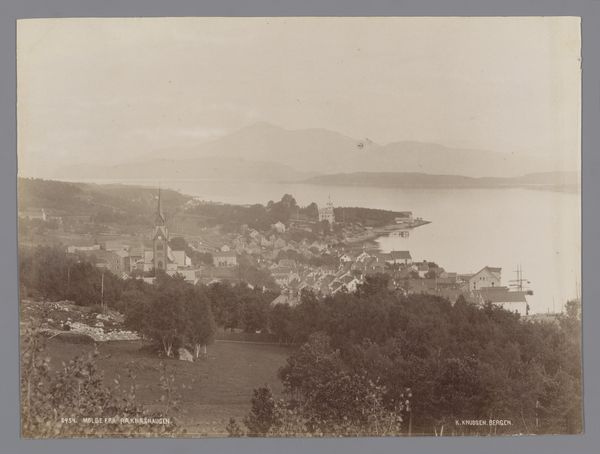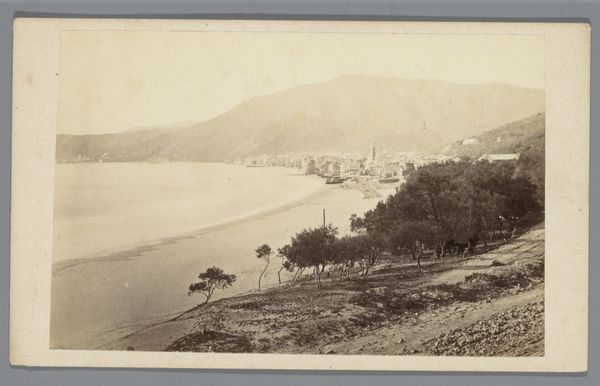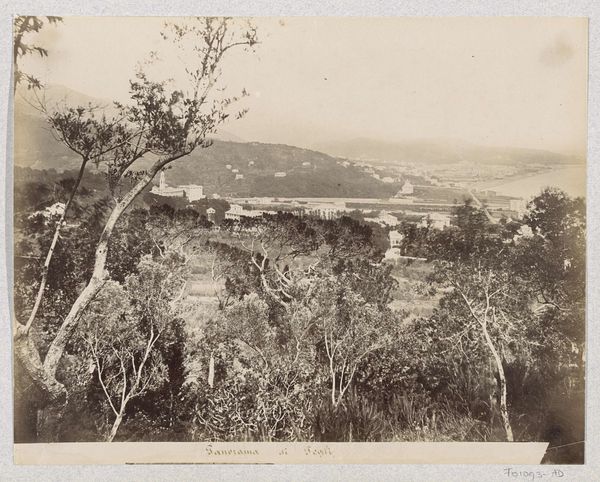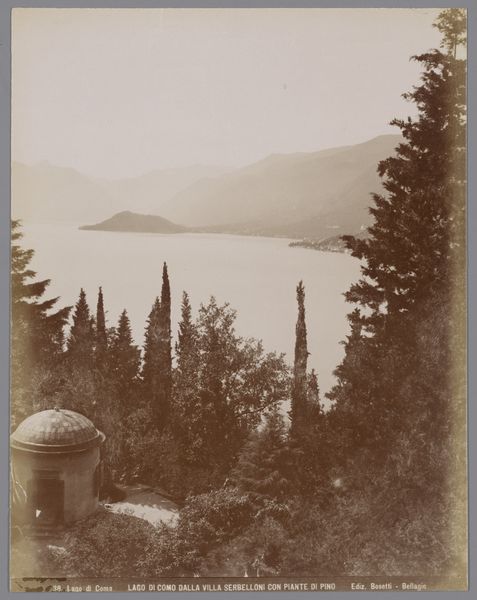
print, photography
# print
#
landscape
#
photography
#
cityscape
Dimensions: height 162 mm, width 225 mm
Copyright: Rijks Museum: Open Domain
Editor: We're looking at a photograph called "Gezicht op Roquebrune-Cap-Martin vanuit La Turbie," which translates to "View of Roquebrune-Cap-Martin from La Turbie." It's from around 1889 to 1920 and it’s located at the Rijksmuseum. What strikes me is the way the city blends into the landscape. How do you interpret the historical context of a photograph like this, particularly regarding its portrayal of urbanization? Curator: Well, consider the timing. Late 19th and early 20th centuries saw massive shifts due to industrialization and tourism. This image, presented as a picturesque landscape, actually showcases the intrusion of infrastructure – roads, possibly rail – upon the natural environment and a small village. The aesthetic framing normalizes, even celebrates, this change. To truly interpret, ask yourself: for whom was this image created and what political or commercial forces might it serve? Editor: That makes me think about how landscape photography back then maybe wasn’t as objective as we might assume. It could have been used to promote tourism. Was there much artistic discourse about this at the time? Curator: Absolutely! There were heated debates. On one side, proponents celebrated progress and technological advancements shaping the world. On the other, critics lamented the loss of untouched nature. And these debates weren't confined to artistic circles. They reflected broader societal anxieties about modernization. Where do you think museums, like the Rijksmuseum, factor into that narrative? Editor: That's a good point. Displaying this image now prompts reflection on how museums shape our understanding of history and progress, even unconsciously influencing our views on these environmental transformations. Curator: Precisely. The seemingly innocent vista becomes a stage for exploring the complexities of representation, power, and the historical forces that shape not just our cities, but our understanding of the world. It's also worth investigating who *isn't* in the picture – whose voices were marginalized by these shifts and by these idyllic representations? Editor: This image is far more complex than I initially thought! I hadn't considered how a simple landscape photo could reveal such intricate socio-political undercurrents. Curator: Art can reveal unexpected histories. Looking beyond the surface will only enhance the conversation.
Comments
No comments
Be the first to comment and join the conversation on the ultimate creative platform.
